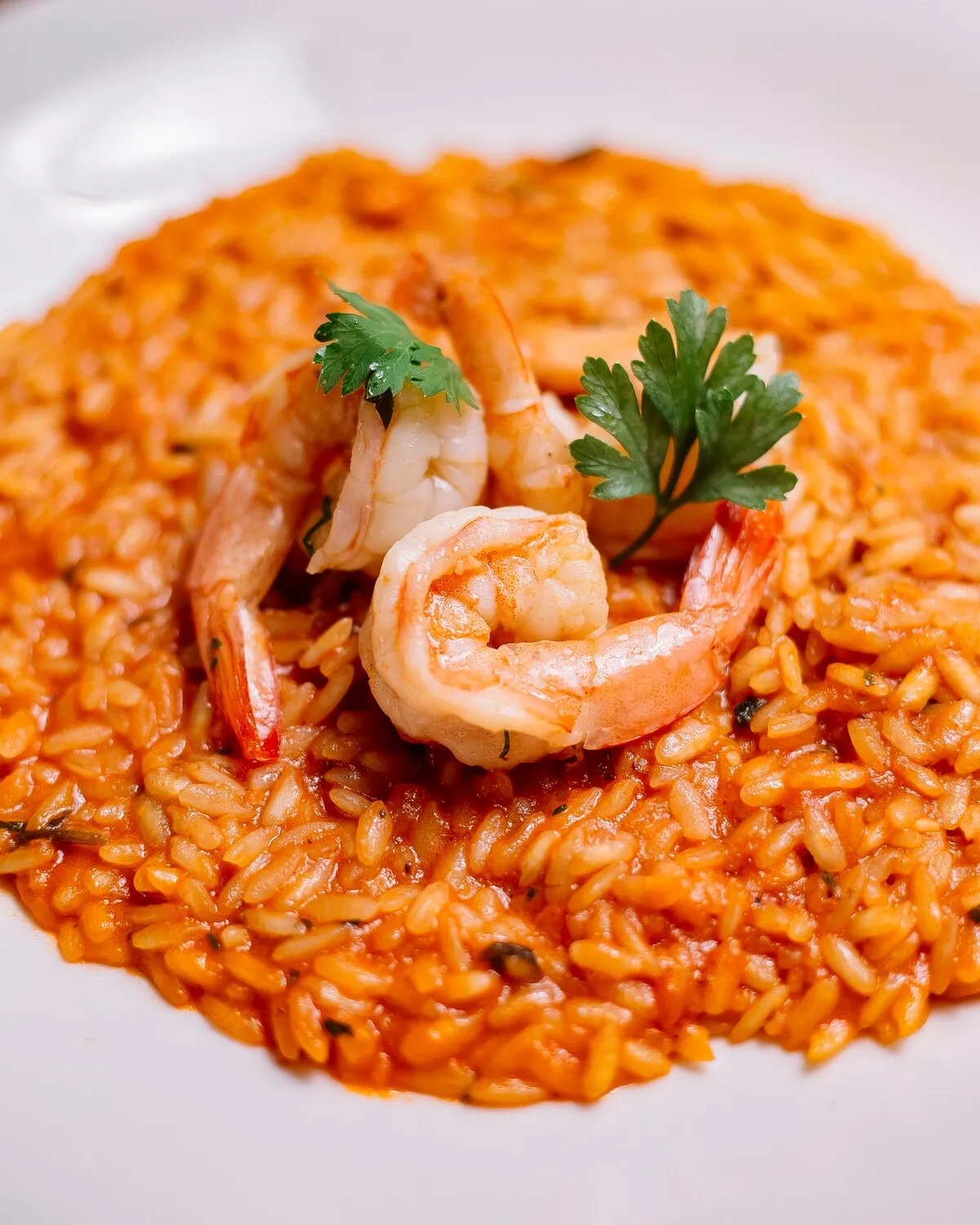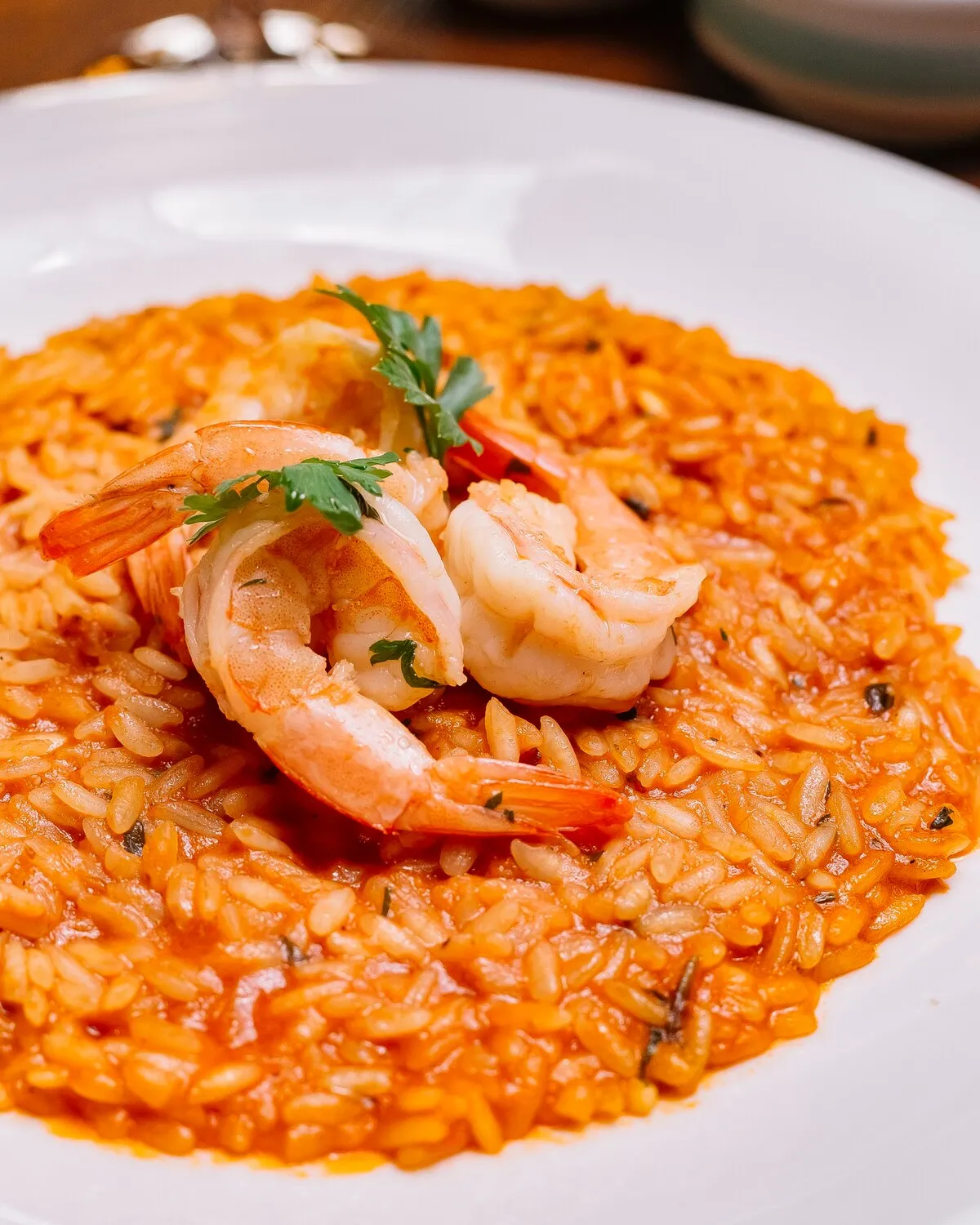
Seafood Risotto
Creamy risotto prepared with fresh seafood.
Nutrition Facts
* The % Daily Value (DV) tells you how much a nutrient in a serving of food contributes to a daily diet. 2,000 calories a day is used for general nutrition advice.
Risotto, as a dish, emerged in northern Italy, particularly in the rice-growing regions of Lombardy and Piedmont, during the Middle Ages. Its evolution was influenced by trade with the East, introducing rice to Italian cuisine. The creamy texture characteristic of risotto developed over time with the addition of ingredients like butter, cheese, and broth. The incorporation of seafood into risotto is a more modern adaptation, reflecting Italy's extensive coastline and access to fresh catches.
Seafood risotto embodies Italian culinary traditions of using fresh, seasonal ingredients and creating dishes that are both comforting and flavorful. It's often associated with special occasions and celebrations, particularly those near the coast.
Regional Variations
Seafood risotto varies regionally in Italy. Coastal regions prioritize locally caught seafood, leading to diverse ingredients depending on the specific area. Some regions might favor clams and mussels, while others emphasize shrimp or squid.
Family Gatherings
Seafood risotto is often prepared for family gatherings and celebrations, especially during holidays or when fresh seafood is abundant. It's considered a dish to be shared and enjoyed together.
Restaurant Staple
Seafood risotto is a common offering in Italian restaurants both in Italy and internationally, showcasing the versatility and appeal of Italian cuisine.
Seafood risotto offers a delightful combination of savory seafood flavors with the creamy richness of the risotto. The dish balances the brininess of the sea with the comforting starchiness of the rice.
The dominant flavors are derived from the seafood components, typically including a blend of shrimp, mussels, clams, calamari, and sometimes scallops or lobster. These impart a briny, slightly sweet, and subtly oceanic taste. The risotto base itself, made with Arborio or Carnaroli rice, is creamy and rich, thanks to the gradual addition of hot broth and the release of starch from the rice grains. The dish often incorporates garlic, onion, white wine, and herbs like parsley and basil to enhance the overall flavor profile. A touch of lemon juice or zest can add brightness and cut through the richness. Parmesan cheese, while sometimes debated as a seafood pairing, can contribute a savory, umami element if used sparingly.
Fresh Seafood is Key
Use the freshest seafood available. The flavor of the dish depends heavily on the quality of the ingredients. Look for bright, firm seafood with a fresh, clean scent.
Proper Risotto Technique
Toast the rice briefly in olive oil or butter before adding the wine. Gradually add hot broth, stirring frequently, allowing each addition to be absorbed before adding more. This ensures a creamy texture.
Don't Overcook the Seafood
Add the seafood towards the end of the cooking process to prevent it from becoming tough and rubbery. Cook it just until it's opaque and cooked through.
Broth Quality Matters
Use a good quality seafood broth or fish stock for the best flavor. You can also make your own by simmering shrimp shells and fish bones with vegetables and herbs.
Explore additional Risotto dishes and restaurants
Explore RisottoDiscover top dining spots and culinary experiences in Venezia.
Explore VeneziaLearn more about the food culture, restaurant scene, and culinary heritage of Italy.
Explore Italy
